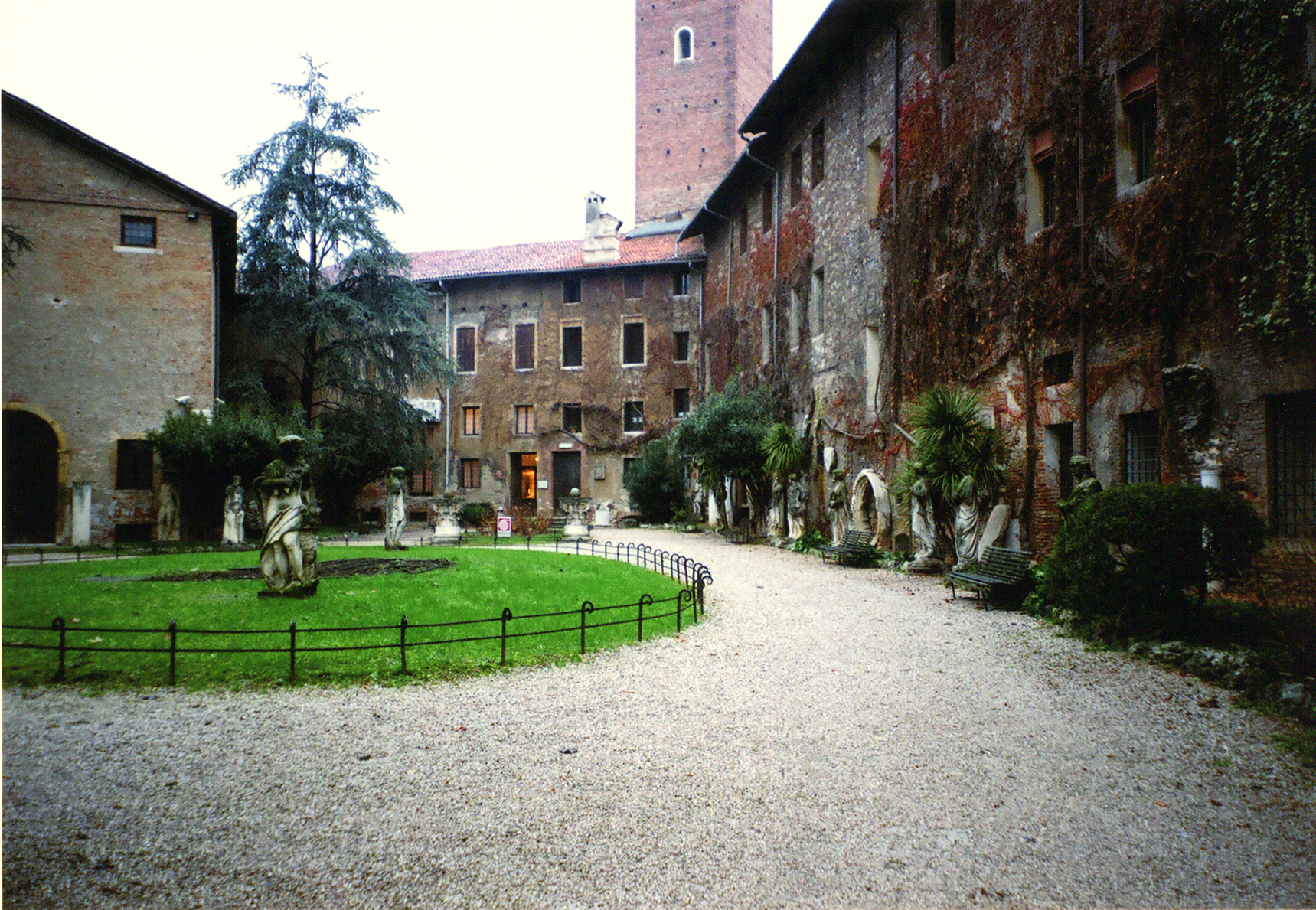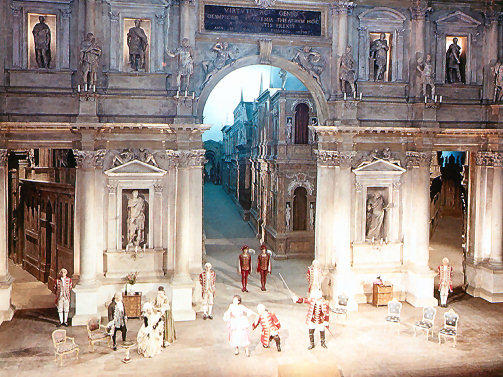In 1570, Palladio published I Quattro Libri dell' Architettura [The Four Books of Architecture]. This literary work cemented Palladio's place in architectural history.
"The book set out Palladio's architectural principles as well as practical advice for builders. The most critical element, perhaps, was the set of meticulous woodcut illustrations drawn from Palladio's own works to illustrate the text. The work was subsequently translated into every European language and remains in print today both in paperback and hardcover".~Boglewood
Palladio is widely considered to be one of the most influential figures in European architecture.
Construction of Teatro Olimpico
Commissioned by the Olympic Academy in 1580, Teatro Olimpico was constructed upon the site of a medieval fortress, used as a prison and powder store.Palladio planned the design for Teatro Olimpico
Vincenzo had an excellent starting point with the sketches provided by Palladio, however Palladio never produced designs for the stage floor of Teatro Olimpico. Scamozzi completed this project himself, fashioning a stage made out of wood and stucco. The stage was meant to be temporary, however it survived and remains in the Teatro Olimpico today.
There are also two rooms designed by Vincenzo Scamozzi at the Teatro Olimpico, those being the Odèo and Antiodèo, as well as the original entrance “archway which leads from the street, through an old medieval wall into the courtyard of the old fortress”.
Scamozzi's stage set at the Teatro Olimpico was the first practical introduction of perspective views into Renaissance theatre. The scenery consists of seven hallways decorated to create the illusion of looking down the streets of a city from classical antiquity. The way in which seats in all parts of the theatre were provided with at least one perspective view can be seen by observing the theatre floor plan and following the sight lines of audience members in different parts of the theatre.
Operation of the Teatro Olimpico
On March 3rd, 1585, Teatro Olimpico
Today, the Teatro Olimpico still hosts musical performances
Influence of the Teatro Olimpico
Teatro Olimpico stands to represent one of the most influential architects in the history of European theater, Palladio. Unlike many of its counterparts, the Globe Theater in London, the Teatro Olimpico still stands in its original state. It remains as a significant historic link to the Renaissance stage.“The Palladian project reconstructed the Roman Theater with an archaeological precision.”
Centro de Studi Architettura Andrea Palladio
More Related Content
The Greeks were gifted, being situated in an area with the highest quality stone. Of course the buildings that were derived from these stones were free of bronzed sculptures, polished monuments, and shrines painted with vivid colors. Monday Ground Up: Greek Architecture
The Sumerian cities were surrounded by walls, much like the Forbidden City, as a way to keep their culture secret and sacred. Sumerian city dwellings were constructed out of sun-dried bricks, including peasant quarters and the larger dwellings of priestly and civic officials.Monday Ground Up: Sumerian Cities
Although the Romans had depended greatly on the ideals of the Greeks when adopting their art and literature, they themselves developed some of the most innovative of inventions that succeeded Western Civilization. The evolution of Roman law which brought about the idea of a systematic principle for justification, the invention of roads allowed for easier transit for soldiers and citizens, as well as the construction of Roman bridges that still stand today.Monday Ground Up: Roman Achievements in Law and Engineering
Roman architecture is classical and hardly practical. It could be described as masculine in a sense, with a hint of solitude. No matter how we interpret the structure, we can all agree that it exhibited a solid foundation and architectural form.Monday Ground Up: Two Architectural Gems in Rome, Italy
Photo sources
Palladio

















0 Comments:
Post a Comment
We appreciate comments, but we delete SPAM.